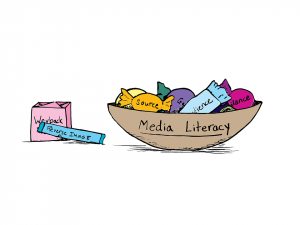
Sensationalism always sold well and will continue to sell as long as news articles that are verifiably false are used to circulate and dominate the social media.
Most people who depend upon social media for their daily news are clueless about bogus content and trust whatever they read. They then distribute the content with great speed inadvertently becoming conduits for such information. The Cambridge dictionary defines sensationalism as presenting information in a way that is shocking or exciting.
News articles with sexual scandals, crime, divorce, celebrity gossip were once fodder for sensationalism but today it has advanced to deliberate misinformation, bogus content, and absolute lies with malicious intent – Fake news.
Today fake news is a thriving, profitable industry in almost every part of the world and is deliberately created to manipulate perceptions, confuse people and arouse emotional responses in the public. It works against the public interest by meddling with politics, influencing voters and impacting democratic processes such as elections.
Issues such as migration, religion, climate change, human rights, and politics are some that are highly impacted by fake news.
It is time for us to take on this evil head-on and deal with the challenges.
A few countries such as Singapore Russia, France, Germany, and Vietnam have considered regulation and legislation as a solution and passed stringent laws to penalize digital platforms heavily if they publish fake news. While censorship can be a quick fix, freedom of expression can be severely affected.
Independent Fact-checkers and myth busters’ are trying to help by checking the veracity of claims and sources but this alone can’t help as it is done post dissemination of news. They can, however, deter the spread of fake news and bring about quality control by making media organizations and politicians accountable for their facts, figures, and statements.
Can educational institutions help?
It is extremely important to educate audiences to distinguish between truth, hype, misinformation, and fake news. According to recent research, half of Americans think Fake news and information is a critical problem for the country today. A Google trends map showed that people were searching for the phrase ‘Fake News’ extensively.
Schools and colleges can definitely play a great role by educating the younger generation – to counter the spread of fake news, as most kids draw their information from social media applications such as Facebook, Instagram and social messaging services such as Whatsapp. The kids lack the ability to reason about the information that is available online.
In a survey conducted by Stanford University study released in November 2016, the majority of the students did not know what sponsored content was and were unable to distinguish from a real news story and sponsored content.
The kids need to be educated with the skills to understand and detect fake news.
Schools can help young children-
- Learn to distinguish facts from fiction and the ability to find and analyze.
- Verify the credibility of the content they receive in the form of image, video or post by using Google.
- Ask questions like who created the content and who may be benefited or harmed by it.
- Provide the skills to succeed as digital learners.
Learn to perform an online search and verify the content by cross-checking with other sources of information. It is important for kids to be able to verify news on their own and know what is true and what isn’t.
Universities can also play a great role in combating fake news by introducing a compulsory course for all on critical thinking, transparency, digital media, fake news, fact-checking, media ethics and violations, and journalism. Case studies of fake news can be incorporated in the course to bring awareness of journalism in the digital age and deal with the rapidly changing disinformation crisis.
A course like this can provide a greater understanding of how fake news is created, what types, who motivates them to create, and how it is received by the public. The younger generation can learn to question the standards, sources, methods, expertise and engage in real criticism of the liberal media.
Views expressed by the author are personal
Sign up for the QuackTrack.org newsletter below!













